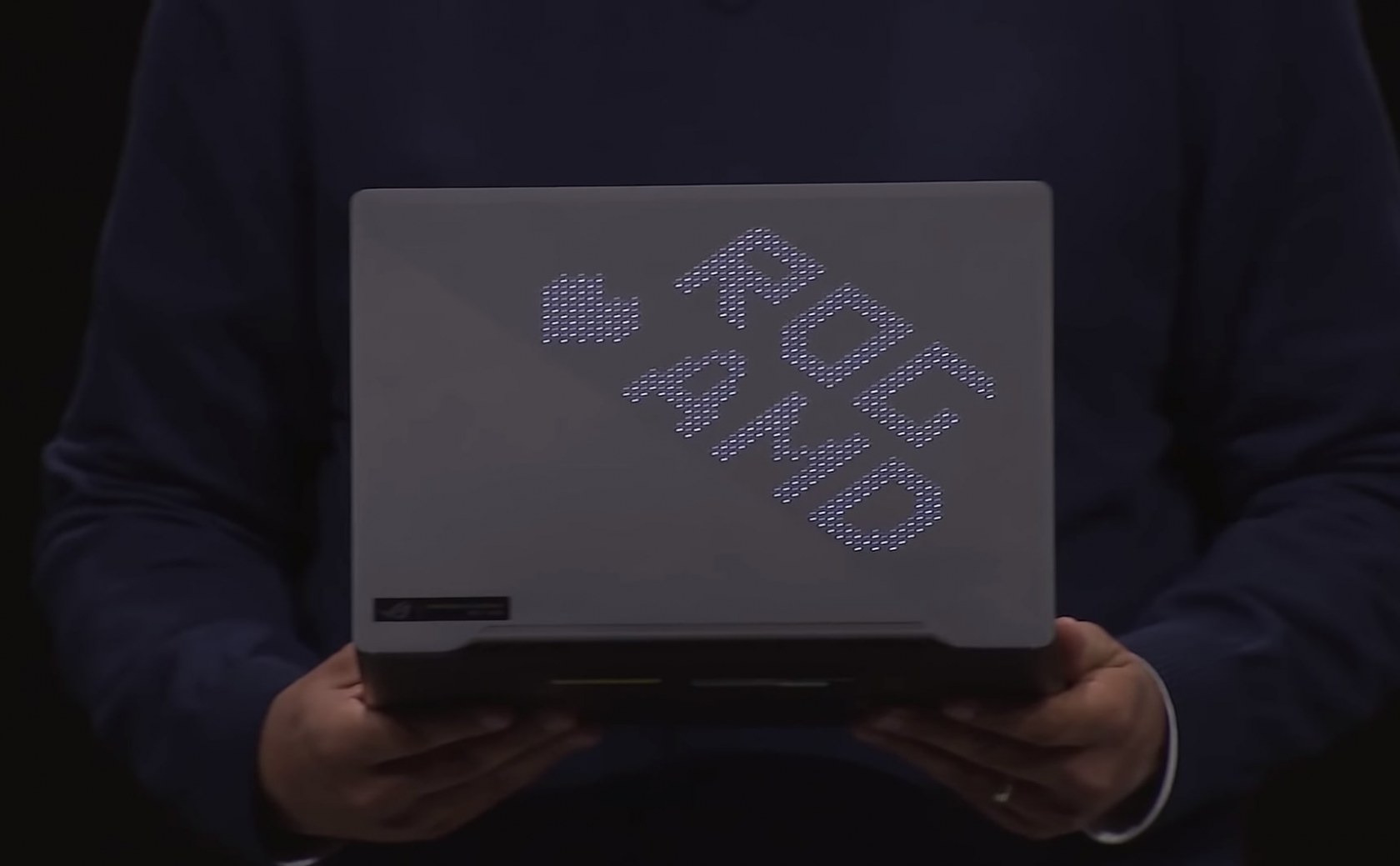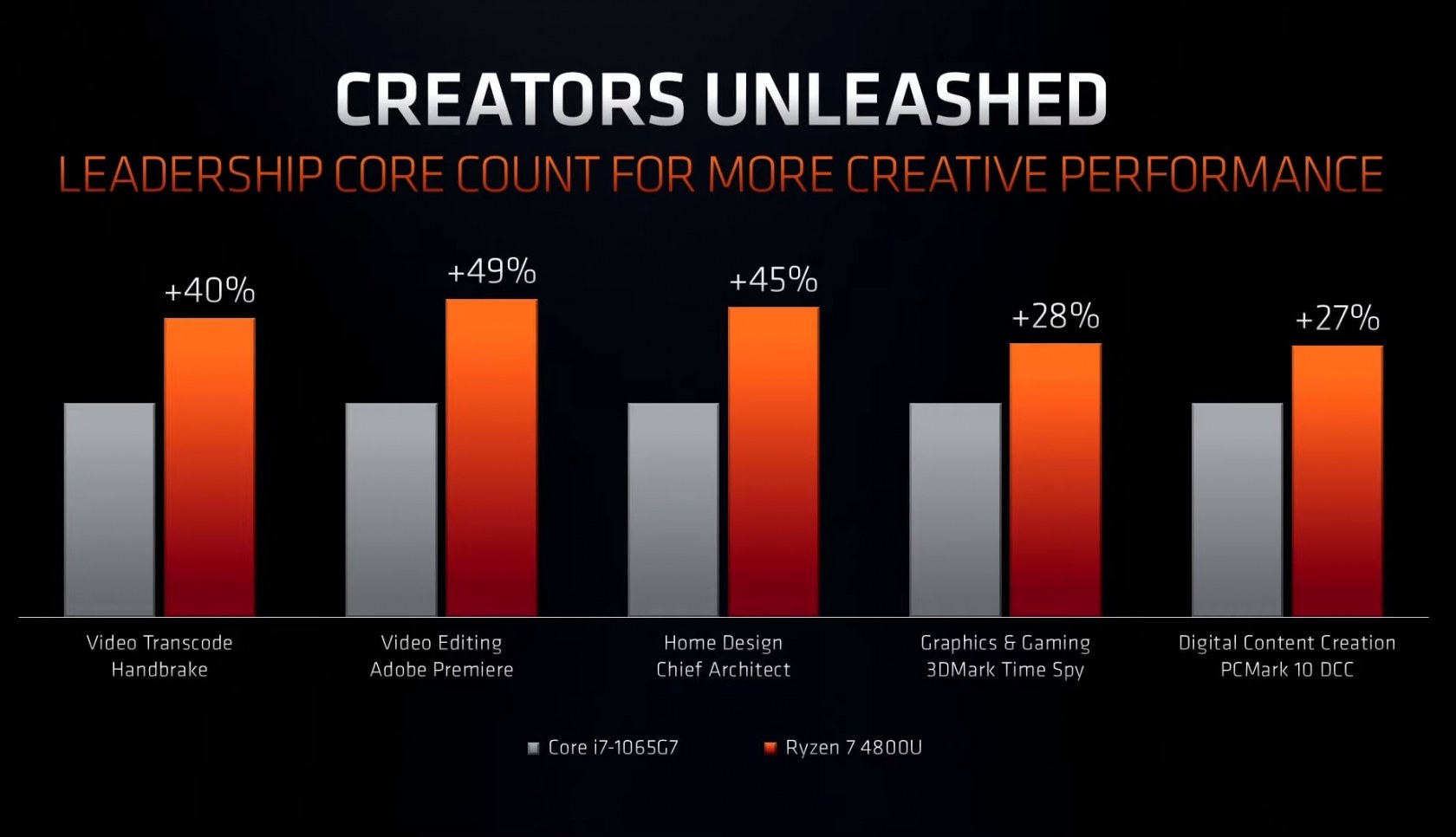Highly anticipated: AMD has revealed their next generation of mobile processors, and it looks like they’re making doubling core counts a habit. Within the same TDP, they’ve gone up to eight cores, increased CPU frequencies up to 4.2 GHz, and increased GPU frequencies up to 1750 MHz.

AMD is launching seven new 4000-series processors, which despite the moniker, use the same Zen 2 technology that 3000-series desktop processors use. But don’t be too upset: AMD says the combination of their Zen 2 architecture and TSMC’s 7nm processor has doubled the performance per watt.
The processors are divided into two categories, the H-series for heavy loads like gaming or content creation, and the U-series for ultraportable laptops. The H-series can be paired with a powerful discrete GPU, while the U-series are meant to be used solo. AMD’s H-series can be directly compared with Intel’s H-series, but AMD’s U-series competes with both Intel’s G-series and U-series.
| Model | Cores/ Threads |
Base Clock | Boost Clock | GPU CUs | GPU Cores | GPU Clock | TDP |
| Ryzen 7 4800H | 8/16 | 3.0 GHz | 4.2 GHz | 7 | 448 | 1600 MHz | 45W |
| Ryzen 5 4600H | 6/12 | 3.0 GHz | 4.0 GHz | 6 | 384 | 1500 MHz | 45W |
*We're assuming each GPU Compute Unit contains sixty-four cores.
The Ryzen 7 4800H is the powerhouse of the lineup. When both are paired with an equivalent discrete GPU, AMD claims it can beat the hexa-core Intel Core i7-9750H by 39% in games, and by 46% in content creation workloads.
| Model | Cores/ Threads |
Base Clock | Boost Clock | GPU CUs | GPU Cores | GPU Clock | TDP |
| Ryzen 7 4800U | 8/16 | 1.8 GHz | 4.2 GHz | 8 | 512 | 1750 MHz | 15W |
| Ryzen 7 4700U | 8/8 | 2.0 GHz | 4.1 GHz | 7 | 448 | 1600 MHz | 15W |
| Ryzen 5 4600U | 6/12 | 2.1 GHz | 4.0 GHz | 6 | 384 | 1500 MHz | 15W |
| Ryzen 5 4500U | 6/6 | 2.3 GHz | 4.0 GHz | 6 | 384 | 1500 MHz | 15W |
| Ryzen 3 4300U | 4/4 | 2.7 GHz | 3.7 GHz | 5 | 320 | 1400 MHz | 15W |
AMD is directly going after the Intel Core i7-1065G7 with the high-end U-series. Intel’s APU has a four-core, eight-thread CPU with a base clock of 2.6 GHz and a boost clock of 4.5 GHz and a 512 core GPU at 1.1 GHz. On paper, the 4800U basically dismantles the 1065G7, and AMD’s benchmark numbers (below) support that. But we’ll have to wait for benchmarks to see how the other processors compare.
"We've actually done a tremendous amount of optimization around these graphics cores... they have 59% more performance than the previous generation."
- AMD CEO Dr. Lisa SU
The 4000-series also makes for a rather peculiar platform. Supported memory speeds have increased from 2400 MHz to DDR4-3200 and LPDDR4-4266, which will seriously boost GPU performance in particular. On the other hand, AMD is not bringing PCIe 4.0 support to mobile, which is a shame.
The Ryzen APU 4000-series will become available in laptops this quarter, with over one hundred models from different manufacturers expected this year.
https://www.techspot.com/news/83428-amd-launches-ryzen-4000-series-apus-up-8.html

